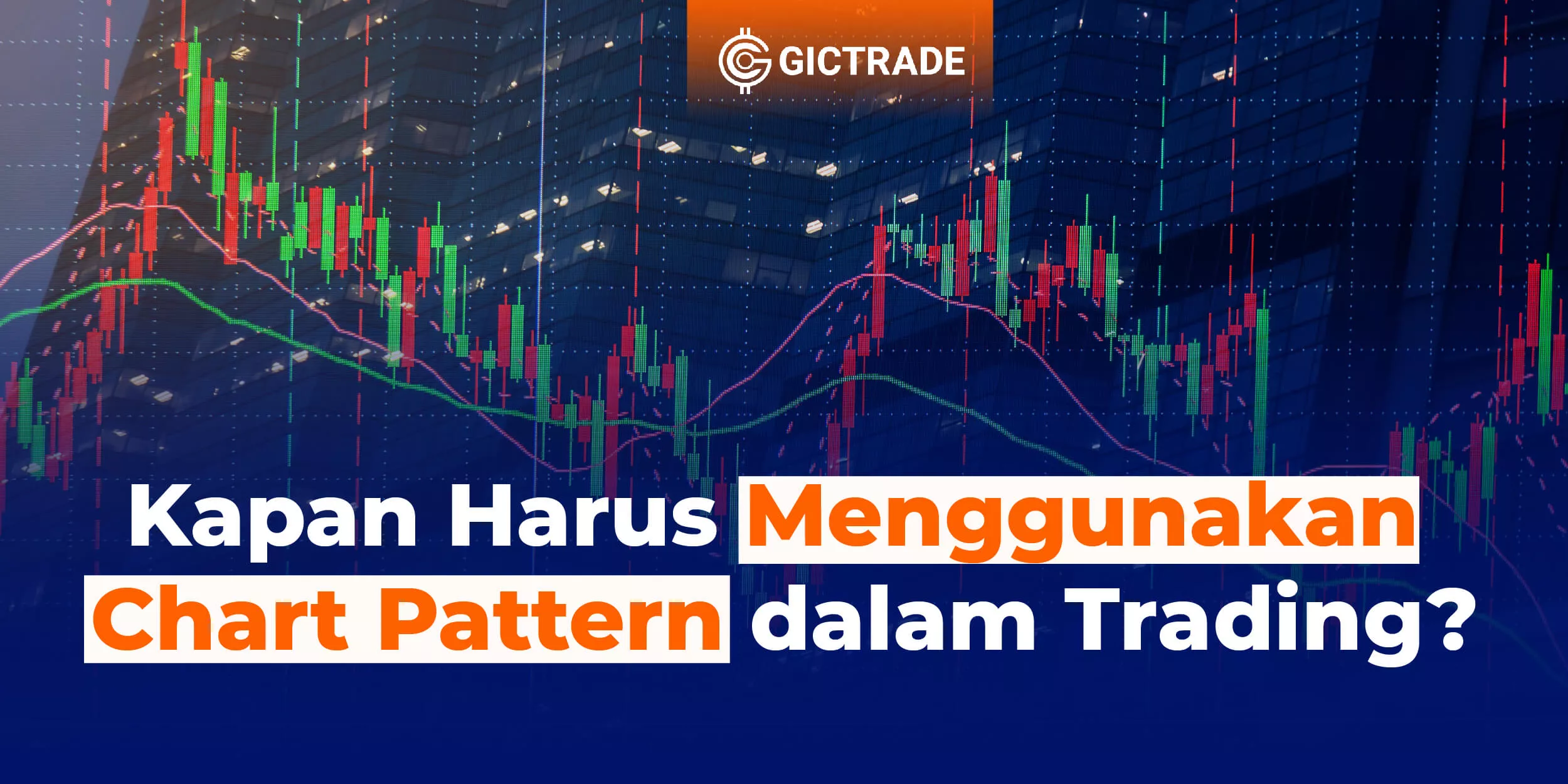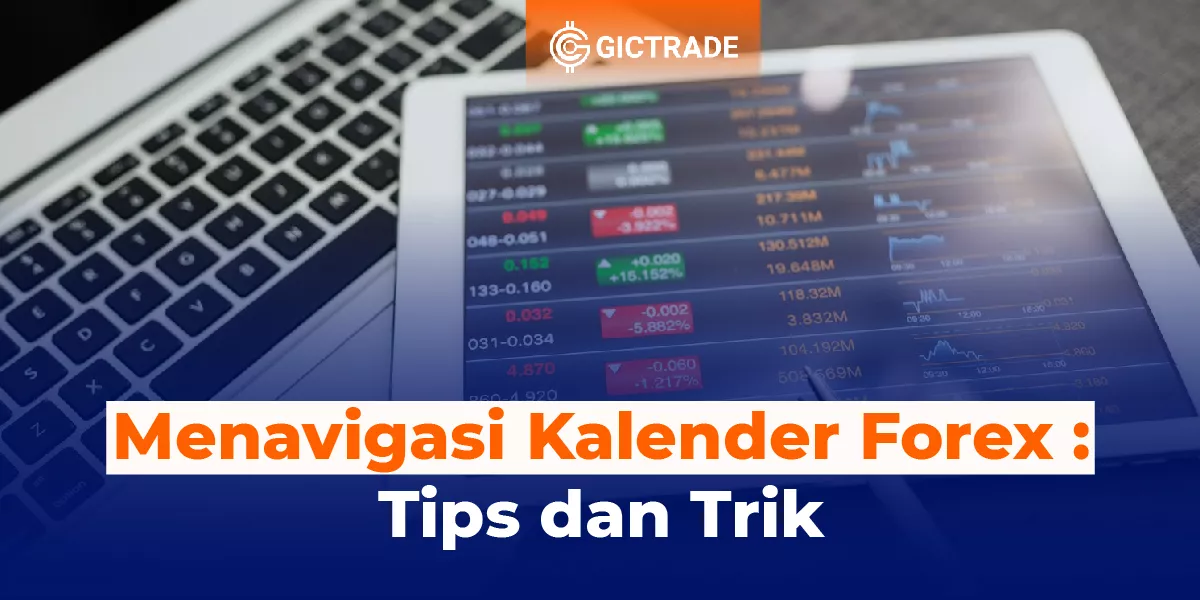When to Use Chart Patterns - In the world of trading, chart patterns are used as an important tool for technical analysis. Chart patterns describe certain patterns on the price chart of a financial instrument, such as stocks or currencies. These patterns provide traders with clues about possible future price movements. In this article, we will discuss when to use chart patterns in trading, as well as how to use them to increase profits and reduce risk.
Table of Contents
- Why Are Chart Patterns Important in Trading?
- When to Use Chart Patterns in Trading?
- Achieve Maximum Profit Fast! Join GICTrade Now
- FAQ's (Frequently Asked Questions)
- What is a chart pattern?
- What is the difference between chart patterns and technical indicators?
- How do I identify a chart pattern?
- Are chart patterns always accurate?
- Can chart patterns be used for all financial instruments?
- What to do in case of a conflict between a chart pattern and a technical indicator?
- Conclusion
Why Are Chart Patterns Important in Trading?
Chart patterns have a very important role in the trading world. In technical analysis, a chart pattern is a tool used to identify certain patterns that form on the price chart of a financial instrument, such as stocks or currencies. Why are chart patterns so important? Here are some reasons that explain the importance of chart patterns in trading:
- Identifying Trading Opportunities: Chart patterns help traders identify potential trading opportunities. By understanding the patterns that form on the price chart, traders can spot repeating patterns and make decisions based on previous experience. For example, a "head and shoulders" or "double bottom" pattern can provide a hint that the price may be experiencing a trend change or reversal. By using chart patterns, traders can better identify opportunities to enter or exit trading positions.
- Determining Stop Loss and Take Profit Levels: Chart patterns also help traders determine the optimal stop loss and take profit levels. In trading, setting the right stop loss and take profit levels is essential to manage risk. By understanding patterns on price charts, traders can identify significant support and resistance levels. This allows traders to specify the appropriate stop loss level to limit losses and the appropriate take profit level to lock in profits.
- Confirming Trading Signals: Chart patterns can be used to confirm other trading signals. For example, if there is a signal from a technical indicator such as RSI or MACD, traders can look for confirmation of chart patterns before making a trading decision. By combining different types of analysis, traders can reduce the chances of receiving false signals and improve the accuracy of trading decisions.
- Identifying Market Trends: One of the main uses of chart patterns is to identify market trends. A market trend is a continuous price movement in a certain direction, such as an uptrend or a downtrend. By understanding patterns such as "ascending triangle" or "descending triangle", traders can recognize whether the market is in an uptrend or a downtrend. By knowing the market trends, traders can take positions that are in line with those trends and increase their potential profits.
Why Does Understanding Chart Patterns Help in Trading?
Understanding chart patterns is helpful in trading because they reflect repetitive market behavior. In the world of trading, there is a saying that says "history repeats itself." This means that patterns that have occurred in the past are likely to occur again in the future. By understanding and recognizing these patterns, traders can make better decisions based on previous experience.
When to Use Chart Patterns in Trading?
.webp)
When Identifying Trends
When identifying trends is the right time to use chart patterns in trading. Chart patterns can help traders recognize and confirm the prevailing market trends. Why is identifying trends so important in trading? Here are some reasons why we should use chart patterns when identifying trends:
- Recognizing Uptrends and Downtrends: Chart patterns help traders recognize uptrends and downtrends in the market. Patterns such as the "ascending triangle" or "bullish trendline" can give an indication that the market is in an uptrend, while patterns such as the "descending triangle" or "bearish trendline" can indicate a downtrend. By understanding these patterns, traders can take positions that match the current trend direction, thereby increasing the potential for profits.
- Measuring Trend Strength: Chart patterns also help traders in measuring the strength of an ongoing trend. Patterns such as the "flag pattern" or "pennant pattern" can provide clues about the continuation of the ongoing trend. If these patterns form after a strong price movement, this could be a signal that the trend will continue. By using chart patterns to measure the strength of the trend, traders can gain confidence in making trading decisions
- Identifying Optimal Entry and Exit Points: When identifying trends, chart patterns also assist traders in determining optimal entry and exit points. For example, a "breakout" pattern is when the price crosses a significant resistance or support level. This could be a signal that the trend is about to continue or change. Using a chart pattern, traders can identify the right entry point when the price breaks out and place a stop loss and take profit according to the pattern formed.
- Confirming Other Technical Analysis: Chart patterns are also used to confirm other technical analysis. For example, if there are signals from technical indicators such as the Moving Average or the Relative Strength Index (RSI), traders can look for confirmation of chart patterns before making a trading decision. By combining various analysis tools, traders can improve the accuracy of trend predictions and avoid false signals.
When Finding the Optimal Entry and Exit Points
When looking for optimal entry and exit points in trading, chart patterns become a very useful tool. Chart patterns help traders identify important levels in price movements, which can be used as a reference to determine optimal entry and exit points. Why is it so important to find the right entry and exit points? Here are some reasons why chart patterns are used when looking for optimal entry and exit points:
- Determining Support and Resistance Levels: Chart patterns help traders identify significant support and resistance levels. A support level is a level where the price tends to turn up after experiencing downward pressure, while a resistance level is a level where the price tends to turn down after experiencing upward pressure. Using chart patterns, traders can observe patterns such as "double tops" or "double bottoms" that indicate the presence of strong resistance or support levels. It provides guidelines for traders to determine optimal entry and exit points.
- Identifying Breakouts: Breakouts occur when the price crosses a significant support or resistance level. Chart patterns such as the "ascending triangle" or "descending triangle" give an indication of a potential breakout. This breakout can be a signal to enter a trade or exit a trade. By utilizing chart patterns, traders can identify the right entry point when the price breaks out of a support or resistance level, as well as place stop losses and take profits according to the patterns formed.
- Divergence Confirmation: Divergence is a mismatch between price movements and technical indicators such as RSI or MACD. Chart patterns can be used to confirm this divergence. For example, if there is a bullish divergence between the price movement and the indicator, a chart pattern such as "bullish engulfing" or "hammer" can provide confirmation that the price is likely to reverse upwards. Conversely, if there is a bearish divergence, patterns such as "shooting star" or "bearish engulfing" can provide confirmation that the price is likely to turn down. By combining divergence analysis with pattern charts, traders can determine optimal entry and exit points.
- Using Continuation Patterns: Continuation patterns such as "flag patterns" or "pennant patterns" are also used to find optimal entry and exit points. These patterns indicate that the ongoing trend will continue after the consolidation period. Traders can take advantage of these patterns to get into the ongoing trend and determine the appropriate stop loss and take profit levels.
When Confirming Trading Signals
When confirming trading signals, chart patterns have an important role in giving confidence to traders. Chart patterns help confirm whether the trading signals provided by technical indicators or other analytical methods are reliable and valid enough. Why is confirming trading signals so important? Here are some reasons why chart patterns are used when confirming trading signals:
- Increased Confidence: When a trader receives trading signals from technical indicators such as the Moving Average or Stochastic Oscillator, they often seek additional confirmation before making a trading decision. Chart patterns give traders additional confidence because they are formed based on the actual price movements in the market. By confirming trading signals using chart patterns, traders can gain greater confidence in taking trading steps.
- Minimizing False Signals: One of the common problems in trading is receiving false signals or inaccurate signals. Chart patterns can help reduce the chances of false signals by providing the necessary confirmation. For example, if there is a buy signal from a technical indicator such as the RSI, traders can look for confirmation of chart patterns such as "bullish engulfing" or "morning star" to ensure that the market sentiment is actually supporting the expected price reversal.
- Determining Stop Loss and Take Profit Levels: Confirming trading signals using chart patterns also helps traders determine the optimal stop loss and take profit levels. By identifying chart patterns such as "head and shoulders" or "double tops," traders can determine significant support and resistance levels. This allows traders to place stop losses at appropriate levels to protect their capital if the price moves against the prediction, and to set realistic take profit levels to lock in profits when the price reaches the expected target.
- Combining Technical Analysis: Chart patterns also allow traders to combine other technical analysis with the trading signals received. For example, if there is a buy signal from an indicator such as the MACD, traders can look for confirmation of chart patterns such as "bullish flag" or "cup and handle" to strengthen their confidence in predicting favorable price movements.
Achieve Maximum Profit Fast! Join GICTrade Now
Unlike other conventional brokerage firms, GIC through the GICTrade platform provides a solution for traders who do not want to be charged with high trading fees. GICTrade is a peer-to-peer trading platform that brings together traders and market makers.
So, what is special about GICTrade? As a platform that brings together traders and market makers, you as a potential customer can certainly choose between the two, namely becoming a trader or a market maker.
GICTrade's role as a transaction venue provider can minimize costs and help maximize profits for traders and market makers as well as create a fair transaction atmosphere and results.
Traders will benefit from the absence of commission fees and low swap fees and spreads due to the presence of market makers as liquidity providers. You can also join the trader community on GICtrade's Telegram to ask fellow traders directly about their trading experience.
FAQ's (Frequently Asked Questions)
What is a chart pattern?
Chart patterns are certain patterns that are formed on the price chart of a financial instrument. These patterns provide traders with clues about possible future price movements.
What is the difference between chart patterns and technical indicators?
Chart patterns depict patterns on price charts, while technical indicators use mathematical calculations to identify trading opportunities. Chart patterns rely more on visualization and understanding of patterns, while technical indicators rely more on numbers and mathematical formulas.
How do I identify a chart pattern?
Identifying chart patterns involves visual observation of the price chart. Traders need to look at certain patterns, such as "head and shoulders" or "double bottoms," that form on the price chart of a financial instrument.
Are chart patterns always accurate?
No, chart patterns are not always accurate. There are times when these patterns produce false signals or do not have the expected price movement. Therefore, it is important for traders to use chart patterns as one of the confirmation tools, not as the only factor in trading decision-making.
Can chart patterns be used for all financial instruments?
Yes, chart patterns can be used for all financial instruments, including stocks, currencies, commodities, and indices. However, it is important to understand that each financial instrument has different characteristics and volatility, so traders need to adjust their trading strategies according to the instrument they are trading.
What to do in case of a conflict between a chart pattern and a technical indicator?
In case of a conflict between the chart pattern and the technical indicator, the trader needs to conduct a more in-depth analysis and look at other factors that affect the price movement. In addition, traders can also use chart patterns as one of the confirmation factors in trading decision-making.
| Also Read : 5 Tips to Maximize the Use of Chart Patterns in Trading |
Conclusion
Chart patterns are an important technical analysis tool in trading. By understanding and recognizing the patterns formed on the price chart, traders can make better decisions and increase the potential for successful trading. However, chart patterns are not the only factor in trading decision-making. Traders also need to consider other factors such as technical indicators, market sentiment, and economic news. By using a comprehensive approach, traders can increase their chances of success in trading.
 Last:
Last: 






